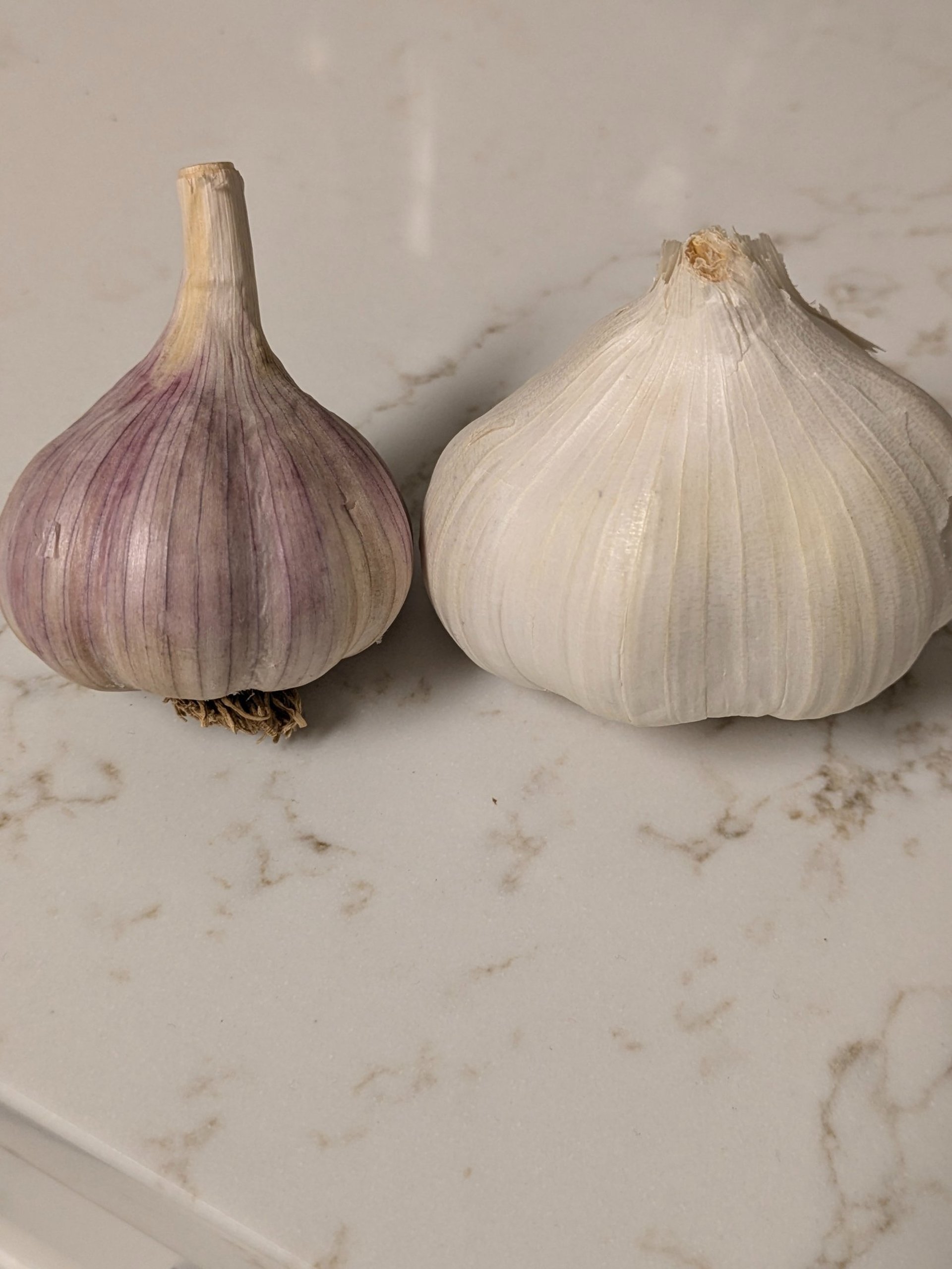
Growing Garlic in Chicago (Zones 5B & 6A)
Discover how to grow flavorful garlic in Chicago’s Zone 5B/6A climate — from choosing the right varieties to planting, mulching, and harvesting. Learn the difference between hardneck and softneck garlic, where to source the best bulbs locally, and how to enjoy homegrown flavor all year long.
JulieAnn Gardens
10/18/20253 min read


Growing Garlic in the Chicago Suburbs (Zones 5B & 6A)
There’s something deeply satisfying about planting garlic in fall and harvesting full, fragrant bulbs the following summer. Garlic is one of those crops that quietly does its work beneath the soil — simple to grow, rewarding to harvest, and rich in flavor.
🧄 Hardneck vs. Softneck: Know Your Garlic
Before planting, it helps to understand the two main types of garlic.
Hardneck garlic produces a tall, curly flower stalk known as a scape in early summer. The scape is edible and tastes like a mild, sweet garlic — delicious in pestos or stir-fries. Hardneck varieties are also better suited for cold climates like Chicago, and they tend to have larger cloves and complex, robust flavor.
Softneck garlic doesn’t grow a scape but makes up for it with its long storage life and flexibility. These are the varieties often used for braiding and typically have a milder flavor — perfect for fresh salsas, dips, and everyday cooking.
No matter which you choose, pick varieties suited to your growing zone and your kitchen preferences. There’s a whole world of flavor out there, from bold and spicy to soft and buttery.
Where to Source Your Seed Garlic
Skip the grocery store — those bulbs are bred for shipping and storage, not taste. Instead, look for quality seed garlic from trusted growers.
Keene Organics – A small family farm in Wisconsin offering organic, U.S.-grown heirloom varieties.
MI Gardener – Based in Michigan, known for affordable, high-quality seed garlic and garden staples.
Your local farmers market – Often the best place to find garlic varieties already thriving in your region’s climate.
Choose the Right Time & Location
Timing: Plant in the fall, about 2–4 weeks before the first hard frost. This gives cloves time to form strong roots before winter sets in.
Sunlight: Choose a spot that gets 6–8 hours of full sun each day.
Soil: Garlic loves loose, rich, well-draining soil. Mix in compost or aged manure before planting.
Prepare the Garlic
Select the largest, healthiest bulbs and gently break them apart into individual cloves. Keep the papery skins on — they protect the clove during growth.
Plant the Cloves
Depth: Plant cloves about 2–3 inches deep.
Orientation: Pointy end up, flat root end down.
Spacing: Space cloves 4–6 inches apart in rows about a 8-12 inches apart.
Finish: Top with compost to enrich the soil and help retain moisture.
Mulch for Winter Protection
Once you’ve planted your garlic, cover the bed with a thick layer of organic mulch — about 6 inches deep. Leaf mulch works wonderfully, or you can use garden straw (a clean, seed-free option available on Amazon).
🌿 Pro tip: Avoid straw from your local hardware store — it often contains seeds that will sprout come spring.
The mulch protects your garlic through the winter, insulating it from freezing temperatures and helping the soil retain moisture. If it’s windy, lightly weigh the mulch down with soil, chicken wire, or bricks so it stays in place.
Wait for Spring
Over winter, your garlic will rest and quietly establish roots. In early spring, green shoots will emerge — a sign your bulbs are waking up. Keep the soil evenly moist but never soggy, and water only during dry spells.
Harvest & Cure
By July, you’ll notice the lower third of your garlic leaves beginning to brown and die back — that’s your signal to harvest. Gently loosen the soil and lift the bulbs with a garden fork or trowel.
Brush off excess soil, but don’t wash them. Let your garlic cure out of direct sunlight for 2–3 weeks in a warm, dry, well-ventilated space. Once cured, trim the roots and tops — or braid if you’re using softneck varieties — and store in a cool, dry place for months of flavor.
Final Thoughts
Garlic is one of the easiest and most rewarding crops you can grow. With a little preparation in fall, you’ll be rewarded the following summer with bulbs bursting with fresh, homegrown flavor.
Whether you prefer the bold bite of hardneck varieties or the mellow sweetness of softneck, planting garlic is the perfect way to close out your gardening season — and start next year’s harvest early.


